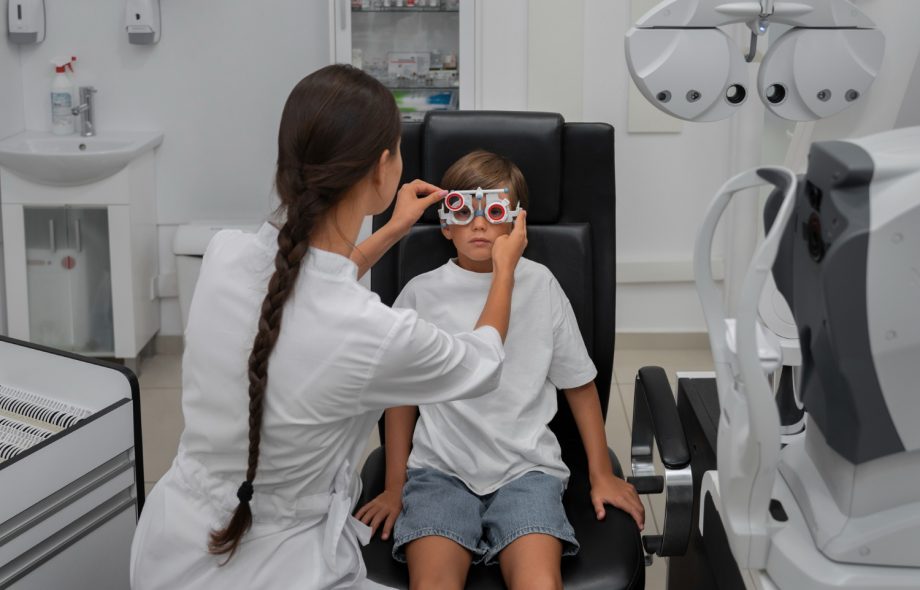Diabetes is a prevalent chronic health condition that affects millions of people worldwide. It is well-known for its long-term effects on health, particularly on vision. Understanding how diabetes impacts your eyes can help you take preventive measures and manage your health better. In this comprehensive guide, we explore the connection between diabetes and vision, detailing how changes in blood sugar levels can lead to serious eye conditions over time.
Key Points
- Understanding Diabetic Eye Disease
- Risk Factors and Symptoms
- Preventive Measures and Treatment Options
- Long-Term Management and Monitoring
For those seeking specialized eye care and more information, visiting a reputable eye center like texan eye center can provide further insights and professional guidance.
Understanding Diabetic Eye Disease
Diabetic eye disease comprises a group of eye conditions that affect people with diabetes. These include diabetic retinopathy, diabetic macular edema (DME), cataract, and glaucoma. High blood sugar levels cause damage to the blood vessels in the retina, leading to diabetic retinopathy, the most common cause of vision loss among people with diabetes and the leading cause of blindness among working-age adults.
Diabetic Retinopathy
Diabetic retinopathy occurs when high glucose levels damage the tiny blood vessels that nourish the retina. It can progress from mild nonproliferative retinopathy (where blood vessels in the retina weaken, bulge, and leak fluid into surrounding tissues) to proliferative retinopathy (where new, abnormal blood vessels grow on the surface of the retina).
Diabetic Macular Edema (DME)
DME is a consequence of diabetic retinopathy that causes swelling in an area of the retina called the macula. It is the most common cause of vision loss among people with diabetic retinopathy and can lead to severe vision impairment and even blindness.
Cataracts and Glaucoma
Diabetes also increases the risk of cataracts and glaucoma. Cataracts cause the lens of your eye to cloud, obstructing vision, while glaucoma affects the optic nerve due to excessive pressure in the eye and can lead to permanent vision loss.
Risk Factors and Symptoms
Anyone with type 1, type 2, or gestational diabetes can develop diabetic eye disease, but the risk increases with poor blood sugar control, high blood pressure, high cholesterol, and smoking. Symptoms might include:
- Blurry or wavy vision
- Frequent changes in visual clarity
- Seeing dark spots or empty areas
- Poor night vision
- Colors appear washed out or different
- Seeing flashes of light
Preventive Measures and Treatment Options
Prevention and early detection are crucial in managing diabetic eye disease. Regular eye exams, controlling blood sugar levels, managing cholesterol and blood pressure, and quitting smoking can help reduce the risk. Treatment options vary depending on the severity and type of eye disease:
- Laser surgery: Used to treat severe diabetic retinopathy by shrinking abnormal blood vessels.
- Injection therapy: Medications called anti-VEGF drugs can help reduce swelling in the retina.
- Cataract surgery: Removes the clouded lens and replaces it with an artificial one.
- Medicated eye drops: Used to treat early stages of glaucoma.
Long-Term Management and Monitoring
Managing diabetes is a lifelong commitment that includes regular visits to healthcare providers, including ophthalmologists. Keeping an eye on your vision health helps prevent severe complications and maintain quality of life. Technological advances in retinal imaging and telemedicine are improving the ways in which diabetic eye diseases are diagnosed and monitored over time.
FAQs About Diabetes and Vision
How often should I get my eyes checked if I have diabetes?
It is recommended that individuals with diabetes have a comprehensive dilated eye exam at least once a year. More frequent exams may be necessary if signs of diabetic eye disease appear.
Can diabetic eye diseases be reversed?
While some treatments can restore some vision loss, most treatments aim to prevent further damage and preserve existing vision. Early detection is key to preventing severe vision loss.
Are there any new treatments for diabetic retinopathy and DME?
Research is ongoing, and treatments are continually improving. Anti-VEGF injection therapy has been a significant advancement in the treatment of diabetic retinopathy and DME.
Can lifestyle changes help with diabetic eye disease?
Yes, maintaining a healthy diet, regular exercise, controlling blood sugar levels, and avoiding smoking can help manage the progression of diabetic eye diseases.
Understanding the impact of diabetes on vision and taking proactive steps to manage your health can help mitigate the risk of severe eye damage and maintain your quality of life. Regular check-ups, treatment adherence, and lifestyle adjustments play crucial roles in the management of diabetic eye conditions.
 :
https://texaneyecare.com/
:
https://texaneyecare.com/

